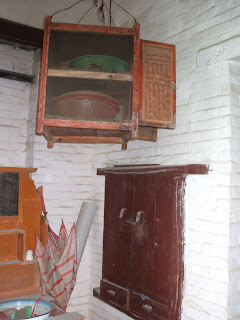Getting there is not easy. Most travelers first fly to Chengdu, then change plane to fly into Jiuzhai. Since the 2008 Sichuan earthquake, traveling is restricted by air into Jiuzhaigou’s Jiuhuang Airport a necessity. Because all travel is by air and the fact Jiuhuang Airport is built on top of a mountain, the trip was not cheap.
We evaluated several tour packages (most were operated from the West Coast area) and finally decided on joining a tour originating from Hong Kong - to help ensure a larger tour group. There is a host of travel agencies in Hong Kong; we chose China Travel Service (www.ctshk.com) 6-day tour of Jiuzhaigou that included HuangLong and Emei Mountain 九寨溝、黃龍、峨嵋山(金頂)、樂山、成都 CB 六天直航團(四程機) for HK$6899 (USD$887). The price included 4 flights (Hong Kong-Chengdu-Jiuzhaigou-Chengdu-Hong Kong), 5 night’s hotel, all meals, and attraction admissions.
Here’s the itinerary by day:
1. Travel: The flight from Hong Kong to Chengdu was about 2-1/2 hours, an evening flight that left Hong Kong at 7:30 PM. By the time we arrived and checked into the Tibetan Hotel, it was midnight.
2. Flight to Jiuzhaigou. We flew early the next day to Jiuzhaigou. It was a 45-minute flight but it was delayed. We arrived around 1 PM, had lunch, and boarded a bus for a 2-hour ride to Huanglong. After visiting Huanglong we lodged at the Sheraton Jiuzhai. In the evening, we attended a Tibetan folklore dance show at the Sheraton Hotel (CNY 150, about USD $22). We left at half show because the music was too loud and we did not quite enjoy the show.
3. Jiuzhaigou: Full day sight-seeing
4. Flight back to Chengdu; visited Lashan
5. Emeishan (Emei Mountain)
6. Chengdu Panda Reserve. The visit was great, we had not seen so many pandas in one place. It was great to see ‘active’ pandas; they were playing, eating bamboo, climbing trees, etc. In contrast, the two pandas at Ocean Park Hong Kong sleep much of the time. We took the 5:30 PM return flight to Hong Kong.
暢遊被列入世界自然文化遺產之一,有 “童話世界”的美譽 ~九寨溝風景
暢遊有 “人間瑤池”仙境之稱~黃龍風景區,飽覽令人迷醉的自然風光 暢遊被列入世界自然文化遺產及有中國佛教四大名山之一~峨眉山轉乘環保包車上峨眉山,繼後乘纜車前往海拔3077米高的金頂,感受「登臺輕世界,俯覽小山川」的境界 峨眉山金頂四面十方普賢金像~是世界上最高的金佛,也是第一個十方普賢的藝術造型。金佛系銅鑄鎦金工藝佛像造像,通高48米,總重量達660噸。 乘遊船欣賞舉世著名的《樂山大佛》及《臥波大睡佛》

 Summary: I am so glad that Sam and I had the opportunity to visit Jiuzhaigou. There are so many scenic sites in the area: Huanglong, Jiuzhaigou, and Emei Shan. The trip was strenuous, mainly because of the bumpy ride and high altitude of Huanglong on the first day of our visit. However, we have no regrets. Jiuzhaigou was truly the trip of a live-time.
Summary: I am so glad that Sam and I had the opportunity to visit Jiuzhaigou. There are so many scenic sites in the area: Huanglong, Jiuzhaigou, and Emei Shan. The trip was strenuous, mainly because of the bumpy ride and high altitude of Huanglong on the first day of our visit. However, we have no regrets. Jiuzhaigou was truly the trip of a live-time.
















































